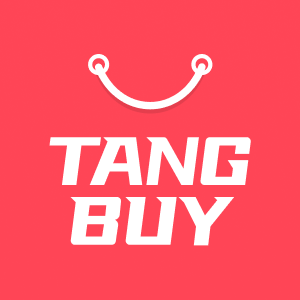Amazon vs eBay Which Platform Should Online Sellers Choose in 2025

If you want the biggest group of buyers and an easy way to sell in 2025, Amazon is a top choice. Amazon has the largest US retail market share at 37.6%. It is the most visited e-commerce site in the world. But eBay lets you be flexible and is good for special or used items. Here is a quick look at Amazon vs. eBay:
Category | Amazon | eBay |
|---|---|---|
Market Share | 37.6% (largest) | Not specified |
Up to 14 days | Instant (rare holds up to 21 days) | |
Fees | 8%-17% referral, $39.99/month plan | 2%-12% final value, $0.35 insertion, upgrades |
Auction Feature | No | Yes |
Customer Interaction | Less bargaining | More bargaining |
Profit, fees, how easy it is to use, product rules, shipping, and customer trust are all important. Think about what you sell and what you want before you choose.
Key Takeaways

Amazon has more buyers and a bigger market share. This is good for sellers with new, branded, or many products.
eBay gives sellers more freedom and is good for unique, used, or collectible items. Sellers can control their listings and prices.
Amazon charges referral, subscription, and fulfillment fees. These fees can be higher but include fast shipping and customer help.
eBay fees are easier to understand and often lower for small or part-time sellers. Sellers pay for listings, final sales, and extra upgrades if they want.
Fulfillment by Amazon (FBA) takes care of storage, shipping, and returns. FBA costs more and needs money up front. eBay sellers usually ship items themselves unless they use Managed Delivery.
Amazon has strict rules for products and some gated categories to keep trust. eBay lets sellers offer more types of items and has fewer limits.
Amazon shoppers trust the site more and like fast, reliable service. eBay buyers want deals, auctions, and rare items.
New sellers may find eBay easier to start with. Amazon has more tools and can help serious sellers grow.
Overview
Amazon Model
Amazon uses a retail and catalog style. You put your products in a big online store. Each item has its own page with pictures, price, reviews, and seller details. You control your listings, prices, and stock using Amazon Seller Central. This tool helps you check orders, message customers, and see your sales. Amazon gives you two main account types: Individual and Professional. You can ship items yourself or let Amazon do it with Fulfillment by Amazon (FBA). Amazon gathers lots of data about what people buy, search for, and review. This helps you change prices and make your listings better. The platform has millions of sellers and buyers all over the world. In 2025, Amazon has more than 180 million Prime members and a customer satisfaction score of 83 out of 100.
eBay Model
eBay is a marketplace that focuses on auctions and special items. You can sell almost anything, like new things, rare collectibles, or used goods. eBay lets you set a fixed price or start an auction for bids. You use the eBay Seller Hub to manage your listings, check sales, and talk to buyers. eBay gives you more freedom in how you describe and price your items. You can sell one-of-a-kind things or big groups of items. eBay brings in buyers who want deals, rare finds, or second-hand stuff. The platform has over 132 million active buyers around the world. Many eBay users are younger, with 39% of buyers between 18 and 24 years old. The site is popular with both men and women, but more than half of mobile users are men.
Key Differences

When you look at Amazon vs. eBay, you notice some big differences:
Market Size and Reach
Amazon has a bigger market share and reaches more people worldwide. It serves over 180 million Prime members. eBay has 132 million active buyers.
Selling Style
Amazon uses a set catalog system. eBay lets you be more flexible with auctions and special listings.
Product Focus
Amazon is best for new, branded, or lots of products. eBay is great for used, rare, or collectible things.
Customer Demographics
Amazon shoppers are mostly Generation X and women, with an average income of $60,000. eBay attracts younger buyers and more men who use mobile devices.
Fees and Cost-Effectiveness
Amazon charges referral, subscription, and fulfillment fees. eBay uses insertion and final value fees. Amazon works better for people who sell a lot. eBay is cheaper for sellers who only sell sometimes or have special items.
Tip: If you want a platform that is organized and uses lots of data, Amazon may be best for you. If you want more freedom and want to sell special or used items, eBay could be better.
Recent reports from travel and tourism groups show that online marketplaces keep getting bigger every year. Both Amazon and eBay get more shoppers as more people buy online. Market data from Statista and other sources show that Amazon is ahead in money and user numbers, but eBay is still strong for special items and auctions.
Amazon vs. eBay: Fees

Understanding the fees on each platform helps you plan your business and set the right prices. Amazon and eBay both charge sellers, but the way they do it is different. You need to know these costs before you choose where to sell.
Amazon Fees
Amazon uses a mix of referral, subscription, and fulfillment fees. These fees can add up, so you need to track them closely.
Referral
Amazon takes a percentage of each sale. This is called a referral fee. The rate depends on what you sell. Most categories have fees between 8% and 17%. Amazon also sets a minimum fee of $1.00 for most items. If you sell in a category with a higher fee, you pay more. For example, jewelry and Amazon device accessories often have higher rates.
Subscription
You can pick between two main selling plans on Amazon. The Individual plan charges you per item sold. The Professional plan costs $39.99 each month. If you sell more than 40 items a month, the Professional plan usually saves you money. The subscription fee is the same every month, no matter how much you sell.
Fulfillment
If you use Fulfillment by Amazon (FBA), you pay extra fees for storage and shipping. Here is a table showing the main FBA fees for 2025:
Fee Type | Amount (2025) |
|---|---|
Order Handling | ~$1.00 per order |
Pick & Pack | $0.60 - $5.00 per unit (size/weight) |
Weight Handling | $0.50 - $0.75 per pound |
Monthly Storage | $0.48 - $2.40 per cubic foot |
Long-Term Storage | $6.90 per cubic foot or $0.15 per unit |
Removal | $0.25 - $0.60 per unit |
Disposal | $0.15 - $0.30 per unit |
Returns Processing | Varies by category |
Amazon also adds new fees for special programs and services. You may see these extra charges:
Amazon Accelerator Fee for startups in the Launchpad program.
Amazon Exclusives Fee for unique products in the Exclusives program.
Amazon For All Fee for products in accessibility and diversity programs.
Shipping Chargebacks for mistakes in labeling or packaging.
Upstream Processing Fee for inventory checks before reaching fulfillment centers.
Upstream Storage Transportation Fee for moving goods to fulfillment centers.
Advertising fees for promoting new or top-selling products.
These fees can change, so you should check Amazon’s fee schedule often.
eBay Fees
eBay uses a simpler fee system. You pay to list items and when you make a sale. You can also pay for upgrades to boost your listings.
Insertion
eBay charges an insertion fee when you list an item. The first 250 listings each month are free. After that, you pay about $0.35 per listing. If you list the same item in more than one category, you pay extra.
Final Value
When your item sells, eBay takes a final value fee. This fee is a percentage of the total sale price, including shipping and tax. Most categories have a fee between 2% and 12%. The exact rate depends on what you sell. Some categories, like heavy equipment or vehicles, have different rates.
Upgrades
You can pay for upgrades to make your listings stand out. These include bold titles, subtitles, or larger photos. Each upgrade has its own fee. You only pay for the upgrades you choose.
Profitability
Fees play a big role in your profits. On Amazon, you pay more if you use FBA or sell in high-fee categories. The monthly subscription also adds up if you do not sell many items. If you sell a lot and want Amazon to handle shipping, the higher fees may be worth it. You save time and reach more buyers.
On eBay, you pay less if you list under 250 items each month. The final value fee is lower for many categories. If you sell rare, used, or unique items, eBay’s fees help you keep more profit. You also control your shipping, which can save money.
Tip: Compare your expected sales and costs on both platforms. Use the fee calculators on Amazon and eBay to see which one gives you the best profit for your business model.
Amazon vs. eBay fee structures keep changing. Amazon adds new fees for special programs and services. eBay keeps its system simple but offers more paid upgrades. In 2025, you need to watch for updates and adjust your prices to stay profitable.
Fulfillment
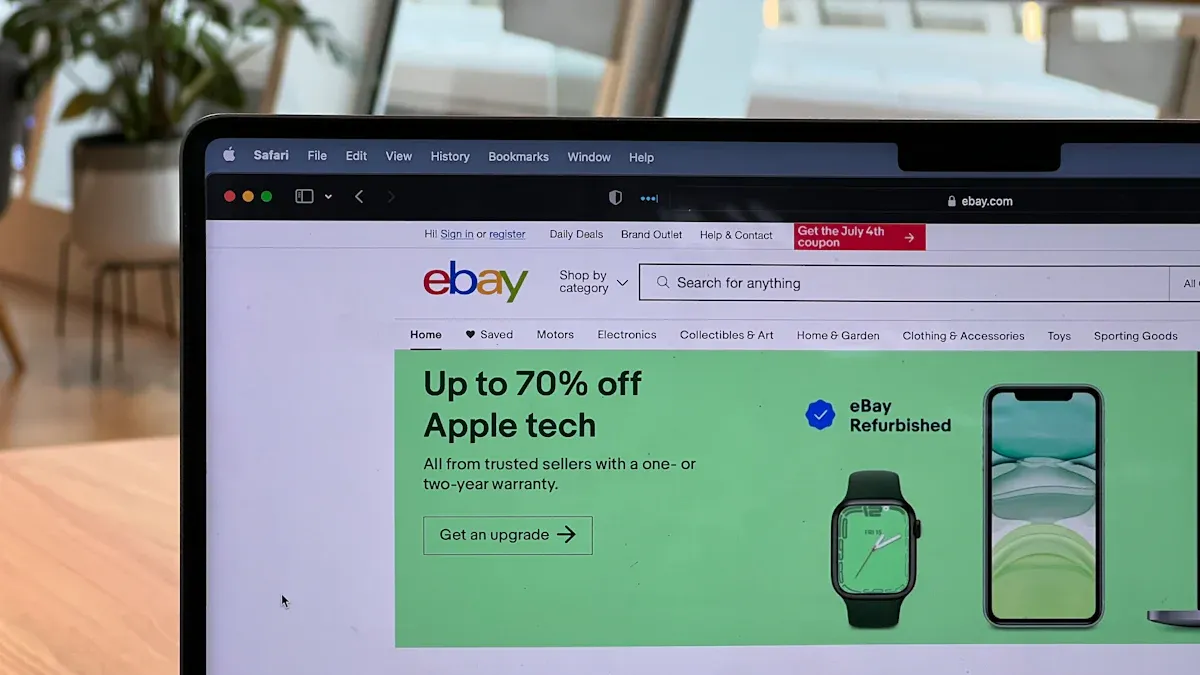
Amazon FBA
Amazon FBA stands for Fulfillment by Amazon. When you use FBA, you send your products to Amazon’s warehouses. Amazon stores your items, packs them, and ships them to your customers. You do not have to worry about handling each order yourself. Amazon also takes care of customer service and returns for these orders.
FBA gives you access to Amazon Prime shipping. This means your products can reach customers in two days or less. Many shoppers look for the Prime badge because they trust fast delivery. FBA can help you win the Buy Box, which can boost your sales. You pay fees for storage, packing, and shipping, but you save time and effort.
You may need more money to start with FBA. Many sellers who use FBA start their business with over $5,000. About 35% of FBA sellers started with this amount. FBA sellers often see slower profits at first, but they can grow their business over time.
Amazon FBM
Amazon FBM means Fulfillment by Merchant. You keep your products at your own location. When someone buys from you, you pack and ship the order yourself. You control the shipping process and can choose your own carriers.
FBM gives you more flexibility. You can use your own packaging and set your own shipping speed. You may save money if you already have a way to ship products. Many FBM sellers start with less money. About 37% of FBM sellers started with less than $1,000. FBM sellers often reach profits faster. Nearly half of FBM sellers made a profit in under three months.
Here is a table that compares some key numbers for FBA and FBM sellers:
Metric | Amazon FBM Sellers | Amazon FBA Sellers |
|---|---|---|
Sellers earning > $25,000/month | 33% | 26% |
Sellers with lifetime sales > $100,000 | 53% | 46% |
Started business with <$1,000 | 37% | 27% |
Started business with >$5,000 | 27% | 35% |
Took less than 6 weeks to start | 51% | 34% |
Realized profit in under 3 months | 47% | 38% |
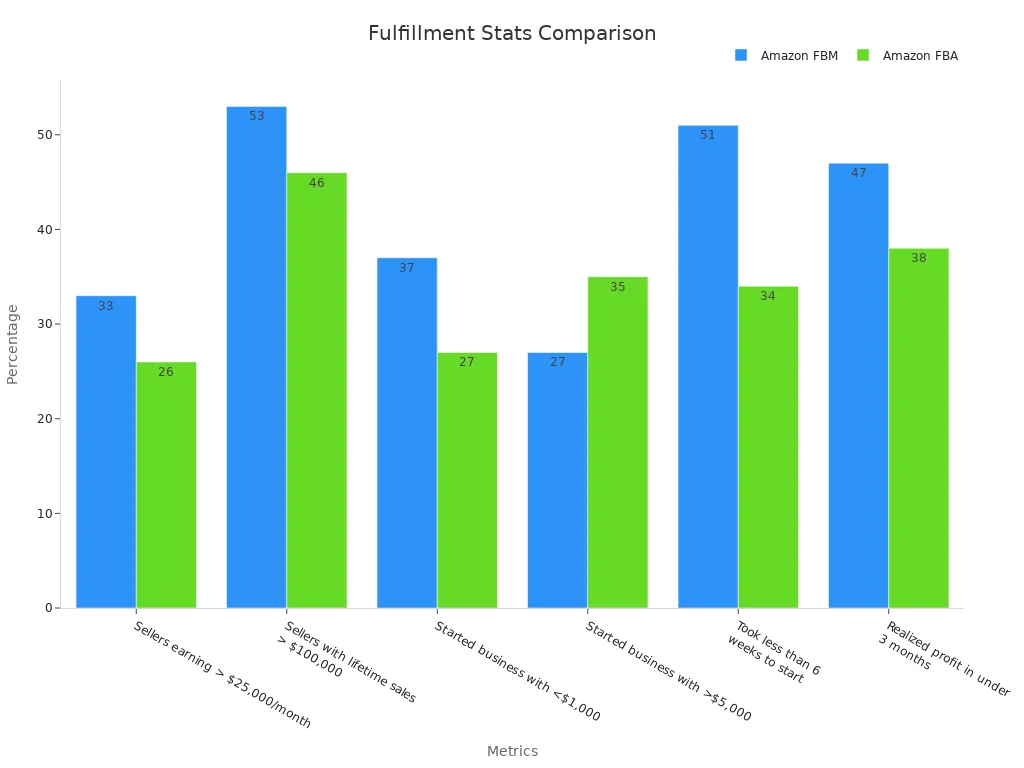
eBay Shipping
On eBay, you handle shipping yourself. You choose how to pack and send your items. eBay does not have a service like Amazon FBA. You must ship orders quickly to keep your ratings high.
If you want to become a Top Rated Seller, you need to ship within one business day. You must upload tracking numbers on time for at least 95% of your orders. To earn the “Fast ‘N Free” badge, you must offer free shipping and deliver within four days. eBay checks your performance with these rules:
Keep your transaction defect rate below 0.5%.
Make sure less than 0.3% of cases close without your help.
Ship late less than 3% of the time.
Upload tracking on time for more than 95% of orders.
Tip: Fast shipping and good service help you stand out on eBay. Meeting these standards can help you attract more buyers and earn better search placement.
eBay Managed Delivery
eBay Managed Delivery is a service that helps you with storage and shipping. You send your products to special warehouses that work with eBay. When someone buys your item, eBay’s team gets it ready and ships it out. This service is a lot like Amazon FBA, but it is made for eBay sellers.
You can use eBay Managed Delivery if you sell many items or want to save time. You do not have to pack each order by yourself. eBay takes care of returns and helps customers for these orders. This can help you keep your ratings high and avoid mistakes with shipping.
Benefits of eBay Managed Delivery:
Fast shipping: Buyers get their items quickly, usually in two or three days.
Trusted tracking: eBay gives tracking numbers for every order.
Lower shipping costs: eBay works with shipping companies to get better prices.
More time for your business: You can spend more time finding products and growing your store.
Note: eBay Managed Delivery is not in every country or for every seller. You need to check if you can use it before you sign up.
If you want to ship fast and compete with top sellers, eBay Managed Delivery can help you. You also get a badge on your listings that shows buyers you use eBay’s trusted shipping. This can make your items look better to shoppers.
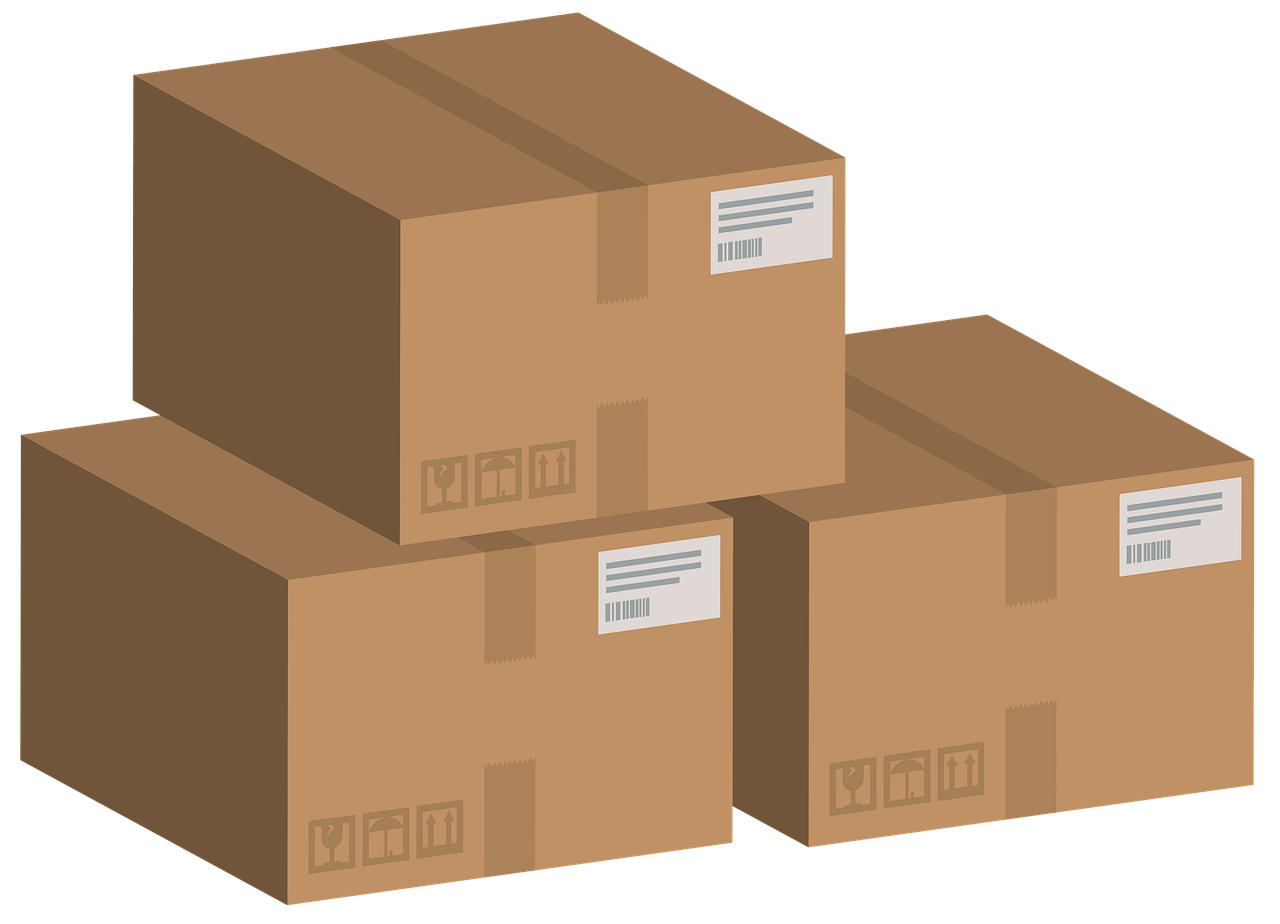
Shipping Comparison
You should look at shipping choices before picking a platform. Amazon and eBay both have ways to help you ship, but they are different.
Feature | Amazon FBA | Amazon FBM | eBay Shipping | eBay Managed Delivery |
|---|---|---|---|---|
Who ships? | Amazon | You | You | eBay partners |
Prime/Badge | Yes (Prime) | No | No | Yes (Fast badge) |
Handles returns? | Amazon | You | You | eBay partners |
Customer service? | Amazon | You | You | eBay partners |
Fast shipping? | Yes | Sometimes | Sometimes | Yes |
Cost | Higher | Lower | Lower | Medium |
If you want the easiest way to ship and handle returns, Amazon FBA or eBay Managed Delivery are good picks. You pay more, but you save time and give fast shipping. If you want to do everything yourself and save money, you can ship your own orders on either platform.
Tip: Think about your budget, how many orders you get, and how much time you have. Pick the shipping way that fits your business best. Fast shipping and good service help you get better reviews and more sales.
Product Rules

Amazon Restrictions
Amazon has many rules about what you can sell. You must follow these rules to list products. Some categories are "gated." This means you need special permission to sell in them. There are 12 gated categories out of 40 main ones. For example, you need approval to sell jewelry or fine art. Some health products also need permission. Amazon adds extra rules during holidays. For example, toys have more rules at Christmas. These rules help stop fake or bad items from being sold.
Amazon checks new product listings very carefully. New sellers may find it hard to add products. Sometimes, Amazon limits how much stock you can send. These limits help control inventory and keep quality high. Amazon has strict rules because it is very big. It wants buyers to trust the site. Over 310 million people shop on Amazon. Amazon wants to protect its good name. You can reach many buyers, but you must follow more rules.
Note: If you want to sell in a gated category, you must show invoices or proof your items are real. You may also need other documents. This process can take a while.
eBay Flexibility
eBay gives sellers much more freedom. You can list almost anything except banned items. Firearms and explosives are not allowed. eBay lets you sell used, vintage, or even damaged goods. You can sell old textbooks, rare collectibles, or second-hand clothes. Most categories do not need special approval.
You make your own business rules. You choose your return and shipping policies. eBay does not limit your stock. You do not have to use eBay’s warehouses. This helps if you want to run a small business. You can sell unique items. Many sellers use eBay for things Amazon does not allow. For example, you can sell used electronics or vintage toys on eBay.
eBay lets you:
Sell in almost any category
List used, vintage, or rare items
Make your own shipping and return rules
Avoid most category limits
Best for Unique Items
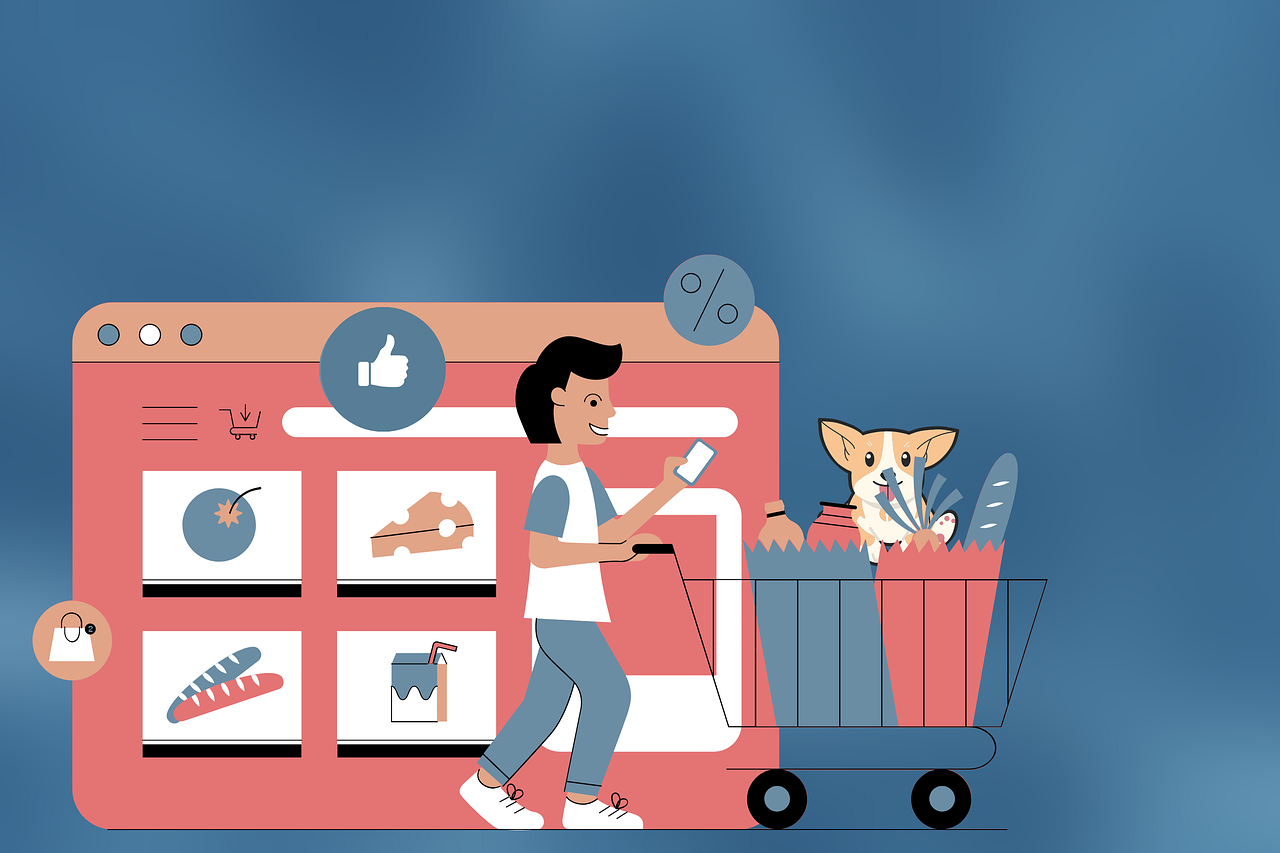
If you want to sell rare or second-hand things, eBay is a better choice. You can find buyers who want special items or deals. eBay’s open rules let you sell things Amazon blocks. For example, you can sell a vintage comic book or a used designer bag. You can also sell collectible toys.
Amazon is best for new, branded, or lots of products. You get more buyers and more trust, but there are more rules. If you want to grow your business and sell popular items, Amazon helps you do that. If you want more freedom and to sell almost anything, eBay is better.
Aspect | Amazon | eBay |
|---|---|---|
Product Restrictions | 12/40 categories gated, seasonal limits | Few restrictions, most items allowed |
Seller Flexibility | Harder to add new listings, restock limits | More control, fewer restrictions |
Best for | New, branded, high-volume products | Unique, used, vintage, rare items |
Tip: Think about what you want to sell. If your items are unique or second-hand, eBay gives you more freedom. If you want to reach more buyers with new products, Amazon may be better.
Customer Base
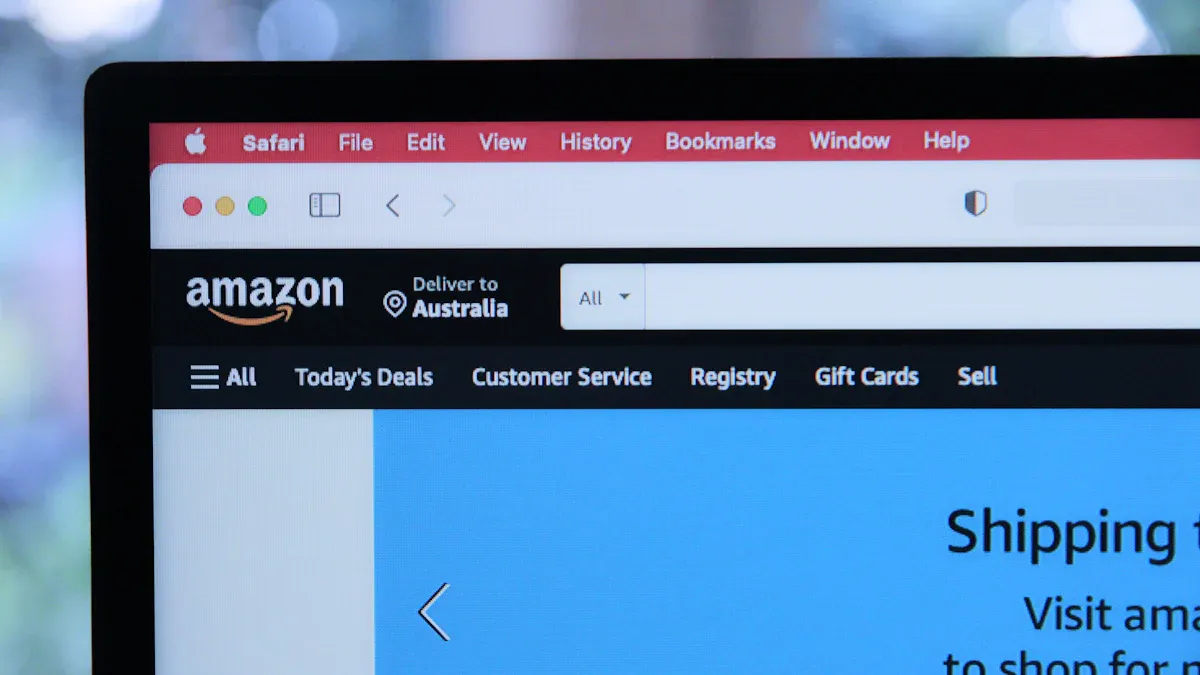
Amazon Shoppers
Amazon has a very large group of shoppers. More than 310 million people use Amazon around the world. Most shoppers on Amazon are women. About 60% of Amazon’s customers are female. Many Amazon shoppers own their homes. Eight out of ten shoppers fall into this group. Most Amazon buyers are between 45 and 54 years old. Many are married, have kids, and went to college.
People shop on Amazon because it is easy and reliable. They want shopping to be simple and fast. They like getting their orders quickly and being able to return things easily. Amazon gives clear information about products. Most people start looking for products on Amazon. About 63% of shoppers do this. Almost 90% of buyers read reviews before they buy. This means people really trust Amazon.
eBay Shoppers
eBay has a different kind of shopper. Most eBay buyers are between 35 and 49 years old. More men shop on eBay than women. About 57% are men and 43% are women. eBay shoppers like finding deals and special items. Many enjoy bidding in auctions and searching for rare things.
Lots of eBay buyers are collectors or hobbyists. Some people use eBay to find used or vintage goods. Some only visit eBay for special deals or hard-to-find things. Others use eBay all the time to buy and sell. eBay shoppers do not always care about fast shipping or new products. They want good prices, lots of choices, and a chance to make offers.
Trust Factors

Trust is very important when people shop online. Amazon is the leader in trust. Almost 9 out of 10 people say they would rather buy from Amazon. Amazon has strict rules for sellers and makes returns easy. This helps shoppers feel safe when they buy.
eBay has worked hard to make shopping safer. In the past, some people worried about scams or fake items. Now, eBay has buyer protection and better help for customers. Still, some people trust Amazon more because of its strong rules and good name.
Here is a quick comparison of Amazon and eBay shoppers:
Aspect | Amazon Shoppers | eBay Shoppers |
|---|---|---|
Age Demographic | Mostly 45-54 years old | Biggest group is 35-49 years old |
Gender Composition | 60% women | 57% men, 43% women |
Education & Family | Many are married, have kids, and went to college | N/A |
Trust Level | 89% more likely to buy from Amazon; strong rules and easy returns help trust | Had trust problems before; buyer protection is better now but still less trusted than Amazon |
Shopping Motivation | Like easy shopping and trust Amazon | Like auctions, deals, and special items |
Loyalty | Some only shop on Amazon | Some only shop on eBay |
Tip: Think about who you want to sell to. If you want shoppers who care about trust, fast service, and easy shopping, Amazon is a good choice. If you want buyers who love deals and rare finds, eBay might be better for you.
Ease of Use

Amazon Seller Central
Amazon Seller Central is your main tool for selling on Amazon. You use it to add products, set prices, and manage your orders. The dashboard shows your sales, inventory, and messages from buyers. You can see reports that help you track your business. Amazon gives you tools for advertising and promotions. You can also use the help center if you have questions.
You may find Seller Central a bit complex at first. Amazon has many rules and options. You need to learn where to find things. The platform has a lot of menus and settings. If you want to grow your business, you will use more features over time. Amazon updates Seller Central often, so you may see new tools each year.
Key features of Amazon Seller Central:
Inventory management
Order tracking
Customer messaging
Advertising tools
Reports and analytics
Tip: Start with the basics. Learn how to list products and ship orders. You can explore advanced tools as your business grows.
eBay Seller Hub
eBay Seller Hub is the main place for you to manage your eBay store. The layout is simple and easy to use. You can see your active listings, sales, and messages on one page. eBay gives you quick links to important tasks. You can create new listings with step-by-step forms. The Seller Hub also shows your performance and feedback from buyers.
You can customize your dashboard to show what matters most to you. eBay makes it easy to find help articles and tips. The platform uses clear language and simple steps. Many new sellers like how fast they can learn the system.
What you can do in eBay Seller Hub:
Create and edit listings
Track sales and payments
Respond to buyer questions
Check your seller rating
See tips for better sales
Note: eBay Seller Hub works well for both new and experienced sellers. You can start small and add more features as you grow.
Onboarding
Getting started on Amazon or eBay is not hard, but each platform has its own steps. You need to make an account, add your business details, and set up payment methods.
Amazon Onboarding Steps:
Sign up for a seller account.
Choose Individual or Professional plan.
Enter your business and tax information.
Add your first product.
Set up shipping and returns.
Amazon checks your details before you can sell. You may need to wait a few days for approval.
eBay Onboarding Steps:
Create an eBay account.
Add your payment and contact information.
Set up your seller profile.
List your first item.
Choose your shipping and return policies.
You can start selling on eBay right away. eBay does not have as many checks for new sellers.
Step | Amazon Seller Central | eBay Seller Hub |
|---|---|---|
Account Approval | Takes a few days | Instant |
Listing Products | More steps | Simple forms |
Learning Curve | Steeper | Easier |
If you want to start fast, eBay is easier. If you want more tools and plan to grow big, Amazon gives you more options.
Amazon vs. eBay: Pros & Cons
Amazon Pros
Selling on Amazon lets you reach lots of people. Over 310 million people shop there. You can use Amazon’s fast shipping and trusted service. Many buyers want the Prime badge. If you use Fulfillment by Amazon (FBA), your items can sell faster. Amazon takes care of customer support and returns for FBA orders. This saves you time. You also get strong tools to advertise and track sales. Amazon’s strict rules help keep the site safe for everyone.
Key advantages of selling on Amazon:
Massive customer base and high traffic
Fast, reliable shipping with Prime
Automated customer service and returns (FBA)
Advanced analytics and advertising tools
Strong buyer trust and high conversion rates
If you want to grow your business fast and reach more buyers, Amazon gives you the size and help you need.
Amazon Cons

Selling on Amazon has some tough parts too. There is a lot of competition from other sellers and even Amazon itself. Amazon controls most of the branding, so you cannot show your store’s style much. The platform has strict rules and standards. If you do not follow them, Amazon can stop your account. Fees can get high, especially if you use FBA or sell in high-fee categories. You must also follow Amazon’s return policy, which sometimes helps buyers more than sellers.
Common drawbacks of Amazon:
Intense competition, including from Amazon’s own products
Limited control over your branding and listings
Strict seller performance metrics and rules
Complex fee structure with referral and FBA fees
Less direct contact with customers
Here is a quick comparison of seller experience on both platforms:
Aspect | Amazon | eBay |
|---|---|---|
Seller Fees | Referral fees typically 8–15% + FBA fees if used | Final value fees usually 10–15% + listing fees for high-volume sellers |
Control Over Branding | Limited; Amazon prioritizes consistency and its own branding | More flexibility; sellers can customize listings and store pages |
Return Policy | Strict and Amazon-controlled | Varies by seller; more seller flexibility |
Customer Support | Handled by Amazon for FBA; high standards and automation | Typically seller-managed unless escalated to eBay |
Best For | Brands seeking scale, fast shipping, and access to Amazon’s logistics | Niche sellers, collectibles, auctions, and sellers wanting more control |
eBay Pros
eBay gives you more freedom as a seller. You can make your listings and store pages look how you want. You pick your own return and shipping rules. eBay is good for unique, used, or collectible things. You can run auctions or set a fixed price. Many buyers come to eBay for rare items or deals. You can talk to your customers more, which helps you build trust and give personal service. eBay’s fees are often lower, especially if you do not list many items each month.
Top reasons to choose eBay:
Flexible branding and listing options
Control over shipping and returns
Great for niche products, collectibles, and auctions
Direct communication with buyers
Lower fees for small or occasional sellers
If you want to sell special items or build a unique brand, eBay gives you the tools and freedom to do it your way.
eBay Cons

While eBay gives you more freedom, you will also face some challenges as a seller. You should know these downsides before you choose eBay for your business.
Lower Buyer Trust: Some buyers worry about scams or fake products on eBay. Even though eBay has improved its buyer protection, many shoppers still trust Amazon more. You may need to work harder to build trust with your customers.
More Work for Sellers: On eBay, you handle most tasks yourself. You must pack and ship every order. You also answer customer questions and deal with returns. If you sell a lot, this can take up much of your time.
No Built-in Fulfillment Like Amazon FBA: eBay does not offer a service like Amazon FBA for most sellers. You must store your own products and manage shipping. eBay Managed Delivery exists, but it is not available everywhere.
Price Competition: Many buyers come to eBay looking for deals. You may need to lower your prices to compete. This can make it harder to earn a good profit, especially if you sell common items.
Unpredictable Sales: Sales on eBay can go up and down. Auctions do not always get high bids. Some items may take a long time to sell. You might not have steady income each month.
Limited Support for Scaling: If you want to grow your business fast, eBay may not give you as many tools as Amazon. You do not get the same level of advertising or analytics. You must find your own ways to reach more buyers.
Note: You should think about these cons when you compare Amazon vs. eBay. If you want more control but do not mind extra work, eBay can still be a good choice.
You may also face more returns or disputes on eBay. Some buyers expect fast shipping and easy returns, just like on Amazon. If you cannot meet these expectations, your ratings may drop. Lower ratings can make it harder to attract new buyers.
If you sell rare or unique items, these cons may not matter as much. Many collectors and hobbyists use eBay for special finds. You can still build a loyal customer base if you offer good service and honest listings.
You should choose Amazon if you want to reach the largest group of buyers and grow fast. Amazon works well for high-volume sellers and those who want strong support. If you sell unique, used, or rare items, eBay gives you more freedom and control. Think about your products, goals, and how much work you want to do. Review the facts from this Amazon vs. eBay guide. Pick the platform that fits your business best.
FAQ
What platform is better for new sellers in 2025?
You may find eBay easier if you are just starting. eBay has a simple setup and fewer rules. Amazon gives you more tools, but you must learn more steps. Both platforms let you start small and grow.
Can I sell used items on Amazon and eBay?
You can sell used items on both platforms. eBay is better for used, vintage, or rare products. Amazon allows used goods in some categories, but you must follow strict rules. Always check the product guidelines before listing.
Which platform has lower fees for small sellers?
eBay usually has lower fees if you sell a few items each month. You get free listings and pay less for each sale. Amazon charges a monthly fee for professional accounts, which can add up if you do not sell much.
How fast do I get paid on Amazon vs. eBay?
You get paid faster on eBay. Most payments arrive right after the sale. Amazon pays you every 7 to 14 days. Sometimes, Amazon holds your money if you are a new seller or have account issues.
Do I need to handle shipping myself?
You must handle shipping yourself on eBay unless you use eBay Managed Delivery. On Amazon, you can ship orders yourself or use Fulfillment by Amazon (FBA). FBA lets Amazon store, pack, and ship your products for you.
Can I run both Amazon and eBay stores at the same time?
Yes, you can sell on both platforms. Many sellers do this to reach more buyers. You must manage your inventory and orders carefully. Using both sites helps you test what works best for your business.
Which site is safer for sellers?
Amazon has strict rules and strong protection for buyers and sellers. eBay has improved its safety features, but some buyers still trust Amazon more. You should follow all rules and keep good records to stay safe on either platform.
What products sell best on each platform?
You will see new, branded, and popular items sell well on Amazon. eBay works best for unique, used, or collectible products. Check what other sellers offer and see where your items fit best.

TangBuy: A Smarter Way to Dropship in 2025
If you're looking to stay competitive with dropshipping in 2025, speed and trend-awareness are key. TangBuy helps you stay ahead with real-time product trends, fast fulfilment, and factory-direct sourcing. With over 1 million ready-to-ship items, 24-hour order processing, and seamless Shopify integration, TangBuy makes it easier to test, scale, and succeed in today's fast-moving eCommerce landscape.
See Also
Choosing Between Amazon And eBay For Your 2025 Online Business
Comparing Dropshipping And Amazon FBA Profitability In 2025
Effective Strategies To Boost Amazon Sales In 2025
